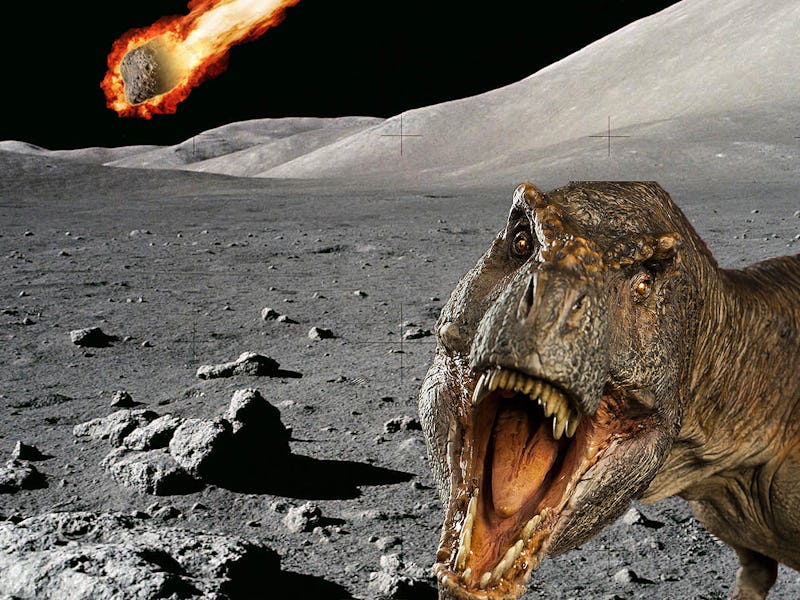The Key to Dinosaur Extinction Might Be Hidden on the Moon
It was the end of the world as they knew it.

The enigma has haunted humanity since the first giant bone was found poking from the ground: How the hell did the dinosaurs just die? Scientists are hoping the answer lies within the moon’s Schrödinger Basin, which has a lot to tell us about what happens when gigantic asteroids hit heavenly spheres.
Sixty-five million years ago, Chicxulub — we’re not sure whether to call it an asteroid or comet — struck our planet, setting off a catastrophic series of events that ultimately killed off nearly all the dinosaurs. It left a crater 110 miles across, but it’s hard to see, buried under a kilometer of sediment deposited since then by geological and hydrological processes.
Not so on the moon, where the lack of flowing water means asteroid impacts stay intact over time. “If one wants to imagine how the Chicxulub crater looked soon after impact, one only needs to peer at the Schrödinger basin on the Moon,” says David Kring of the Lunar and Planetary Institute in a release.
The moon's Schrödinger basin. According to lunar convention, craters more than 186 miles across are called basins.
New research led by Kring and published in Nature Communications sheds new insight on the Schrödinger event on the moon and its implications for Earth’s own deep history.
About 3.8 billion years ago, when the Schrödinger impactor struck the moon, it excavated a hole maybe 20 miles deep, ejecting rock and magma in a sheet that rose 12 miles above the lunar surface before collapsing, leaving a crater 200 miles across, with an internal ring of jagged mountain peaks 1.5 miles high. This would have all gone down in less than an hour.
Earth’s own impact event would have looked similar, the research suggests, although it would have occurred even more quickly because of the stronger gravity. Imagine watching the event from a safe distance — the deep hole in the planet, the rising tide of red-hot molten rock, the sudden formation of a ring of towering mountains. That is some straight up Mordor shit.
The dinosaurs would not have all died right away, although those within several hundred miles of the impact site certainly would have been toast. The immediate aftermath was earthquakes, landslides, and tsunamis. Molten rock would have rained down on the planet, at great distances from the impact sites, causing enormous forest fires.
The dust from the event would have plunged the planet into darkness that might have lasted six months, and disrupted photosynthesis for a year, dramatically decreasing global temperatures, perhaps freezing some parts of the planet solid. Those who survived all of this would still contend with new toxic chemicals in the air and rain. And when the freeze lifted, there was probably a period of global warming that continued for centuries, ultimately rising temperatures well above what they were before the impact.
When all was said and done, maybe three quarters of all species on Earth were gone forever. And among the dinosaurs, only birds survived. (Perhaps, according to one recent theory, because they ate seeds when all the plants had died.)
It was the end for the enormous and awe-inspiring creatures that come to mind when we think of dinosaurs, but it was also a beginning for those survivors that would go on to adapt to the new conditions and inherit the Earth, including our very own distant ancestors.